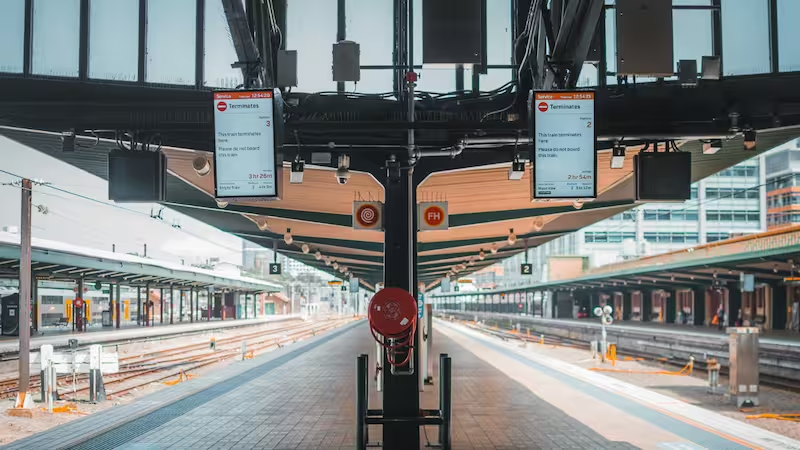
Table of Content
Staying ahead in retail involves a balance between keeping pace with the latest trends and predicting the next shift. The biggest wave of change happening now is the young generation of shoppers.
Gen Z's shopping habits are setting a record of their own. This generation is being shaped by instant gratification and effortless access to commodities. Think of same-day delivery by Amazon, the surge of Chinese wholesalers, including AliExpress and DHgate, and fast fashion by Shein and Primark.
As a retailer, how do you live up to the expectations of a generation with values so different from their predecessors? And no, it’s not by slashing prices or offering flash sales. You need to understand the Gen Z consumer to be more strategic.
Who Is The Gen Z Shopper
Generation Z, also Zoomers, are typically those born from the mid-1990s to 2010s who are around 11 - 26 years of age.
It is an age group where keeping up and fitting in is extremely definitive. Gen Zers even confess that fashion trends especially tend to affect their spending habits, making them feel left out if they don’t possess the latest trends.
And we have socials to blame for that. Gen Zs spend an average of 4.25 hours on TikTok, Instagram, Snapchat, and Facebook, engaging with influencer content and brand ambassadors.
They’re tech-savvy, and their product research begins online from their mobile phones by checking peer engagement with a product either through comments, likes, and the number of shares.
They tend to favor brands that demonstrate ethical practices, sustainability, and social responsibility. They’ll likely purchase from brands that align with personal beliefs and values.
Statistical Insights and Research Data
Gen Z has significant spending power, estimated at over $360 billion in disposable income as of 2022.
About 80% of Gen Z and millennial shoppers have purchased products they saw on social media feeds(Statista).
Data shows that 87% of Gen Z shoppers desire a personalized shopping experience, and only 39% trust companies to protect their private data.
"Buy now, pay later" options are popular among Zoomers, with 55% using this service at least once per year. It indicates their comfort with and preference for flexible payment solutions.
Furthermore, user-generated content like unboxing videos, product reviews, and testimonials shared on social media platforms can highly influence them through social proof.
84% of Gen Z consumers prefer brands that treat them as individuals and offer uniquely tailored experiences.
The Digital Shopping Landscape for Gen Z

Online Platforms and E-commerce Trends
Data reveals that fashion and electronics rank among the most frequently purchased categories, although their participation in these segments remains lower than that of millennials and Gen X.
Their shopping journey involves an omnichannel approach where product research takes place on social media and price comparisons on e-commerce websites before they make a purchase.
As a result, they expect a seamless navigation process with online platforms. According to an IBM report, 60% of Gen Zers will abandon a brand if its website is difficult to navigate or takes too much time to load. The same is true if they can’t access some pieces of information themselves, such as delivery times or product reviews.
Gen Z's Relationship with Virtual Marketplaces
Gen Z shoppers love e-commerce experiences that incorporate components of the metaverse, where they can purchase products in a fully digital world and engage in immersive experiences.
They are familiar with gaming platforms, digital assets, and play-to-win opportunities, and they expect more from e-commerce channels and virtual stores every day.
On top of that, immersive technologies like gaming and virtual reality are intriguing to Zoomers because they enjoy trying on virtual outfits or exploring products in a VR store.
Embracing Digitalization in Retail
The Role of Digital Signage in Gen Z Shopping
Gen Z interacts with visually engaging content from Instagram, TikTok, and YouTube consistently. Digital signage for retail replicates this experience through stunning graphics, animations, and videos.
These signs can display vivid, changing content such as promotions, new product releases, or interactive elements in a way that captures and retains the attention of a Zoomer.
We mentioned that a brand’s values are often as important as the products themselves to young shoppers. Digital screens highlight social responsibility and authenticity in a way that appeals to Gen Z's desire for meaningful brand connections.
Digital displays also allow retailers to update content in real-time to keep pace with the rapidly changing interests and trends that are characteristic of this generation.

The Appeal of Self-Ordering Kiosks
Installing self-ordering kiosks in your store is another step closer to achieving Gen Z loyalty. They’re twice as likely as Gen X to prioritize self-service kiosks as a must-have in a modern shopping experience (CreativeRealities).
This is because young shoppers value independence and appreciate the autonomy and control self-service kiosks provide, allowing them to browse, customize, and make decisions at their own pace.
These kiosks also provide a platform for interactive engagement, such as personalized recommendations and promotions, which enhance the overall shopping experience.
Adapting Retail Strategies for Gen Z

Tailoring Shopping Experiences to Preferences
Gen Z is more tolerant of one-off mistakes but still ready to abandon a brand if their interaction with it is consistently poor.
Here are important measures you can take to make their experience with your business more seamless:
- Mobile-First Design: Optimize websites and apps with user-friendly interfaces for mobile devices.
- Social Media Integration: Utilize platforms like Instagram and TikTok for marketing, sales, and engagement.
- Fast and Transparent Shipping: Offer quick, reliable shipping with clear tracking options.
- Sustainability and Ethics Focus: Highlight sustainable practices and ethical production in products.
- Responsive Customer Service: Provide efficient customer service through digital channels like chatbots and social media.
- Flexible Payment Options: Include various payment methods like digital wallets and buy-now-pay-later services.
Integrating Technological Solutions for Engagement
Zoomers live for in-store experiences. They enjoy touching, feeling, and trying out products as it provides an experience that online shopping cannot fully replicate.
Therefore, incorporating augmented reality (AR) into the physical shopping experience can be highly appealing to them. It could involve interactive displays where they can visualize products in different scenarios or virtual try-on stations for clothing and accessories.
Beacon technology is another great approach for sending targeted offers and information directly to their smartphones as they move through different sections of a store. This technology can enhance the shopping experience by providing tailored discounts and product recommendations based on the location within the store and the shopping history.
Facilitating interaction within the store environment through photo booths or interactive screens for sharing their experiences directly on social media can also resonate with the socially connected Gen Z.
Navigating The Future of Retail
Now that you have a comprehensive overview of Gen Z's shopping habits. Start by evaluating your current strategies and consider how you can integrate more interactive, authentic, and technologically advanced elements into your customer experience.
Deploying digital signage solutions will enable you to provide easily accessible information, personalized experiences, and visually appealing content. This targeted approach can lead to higher sales and conversion rates as it resonates with their preference for visually stimulating and interactive shopping experiences. Try our Look Digital Signage content manager today!








